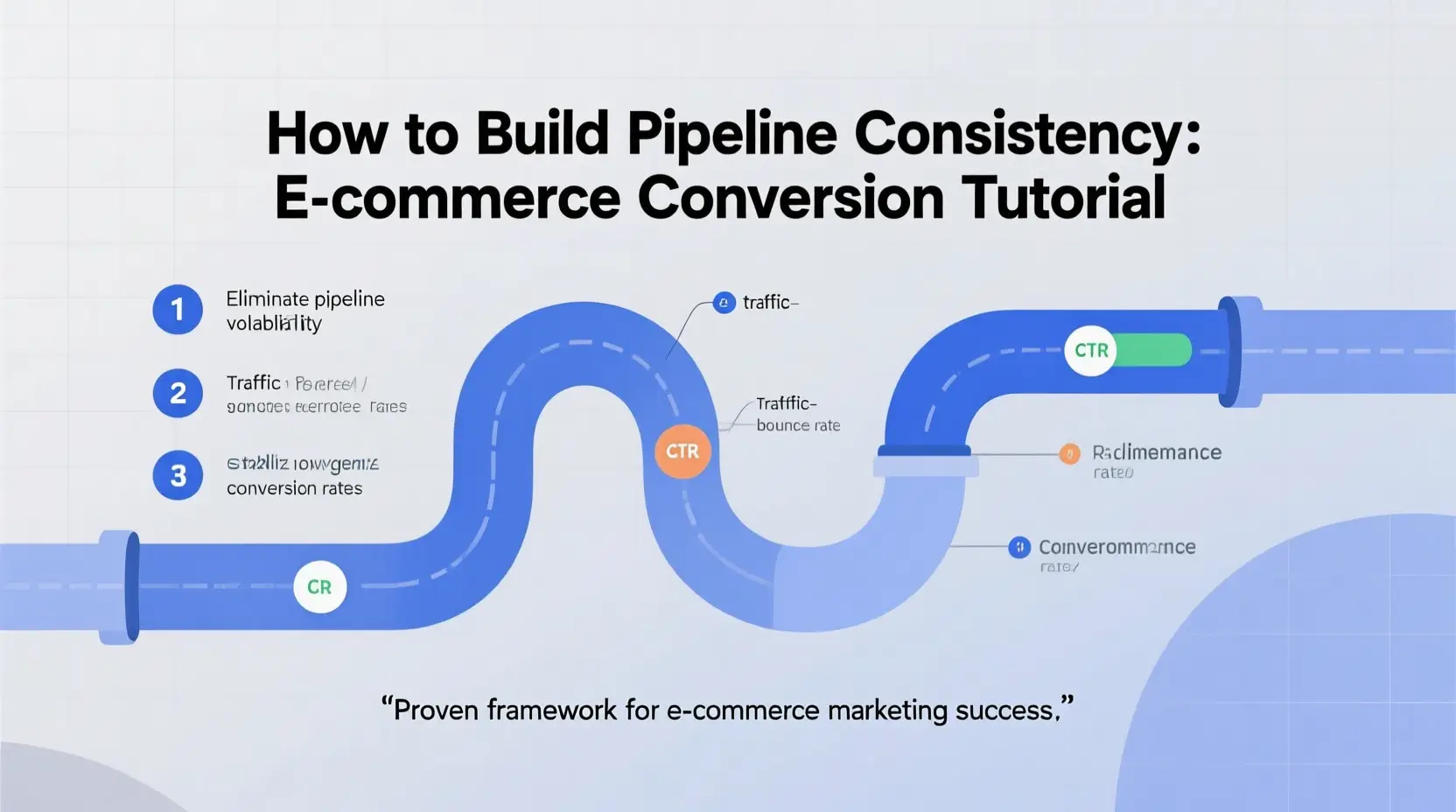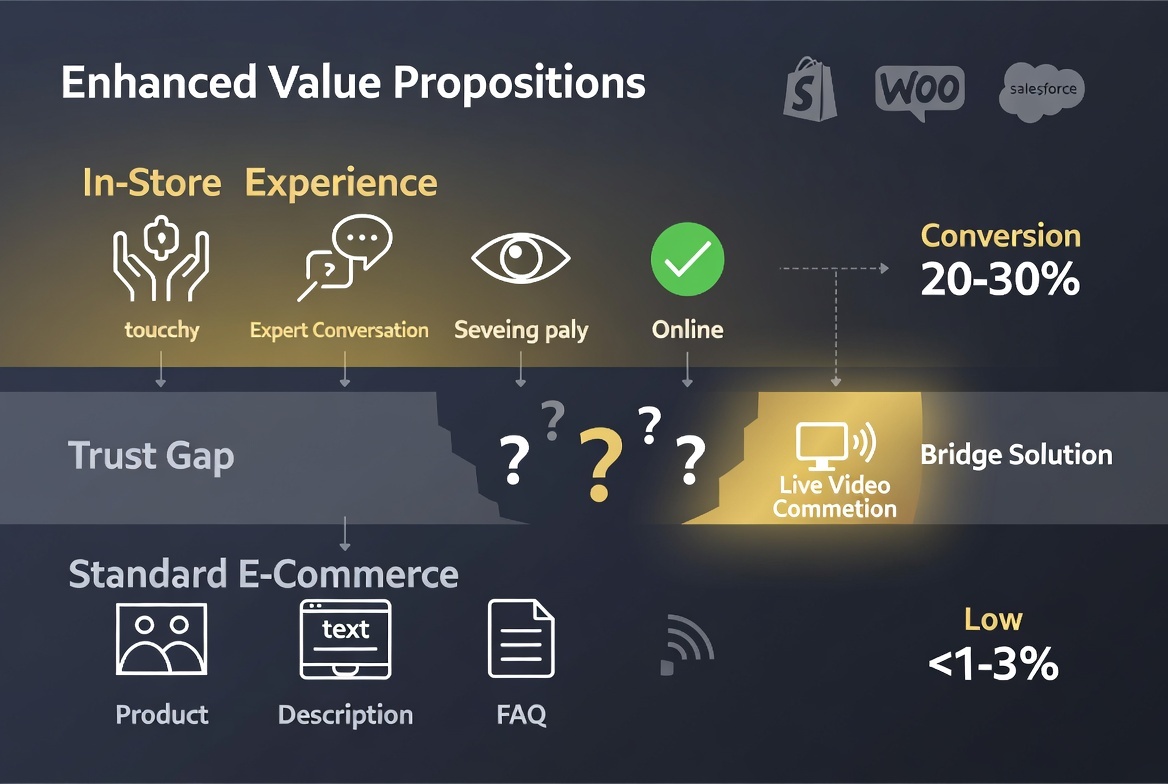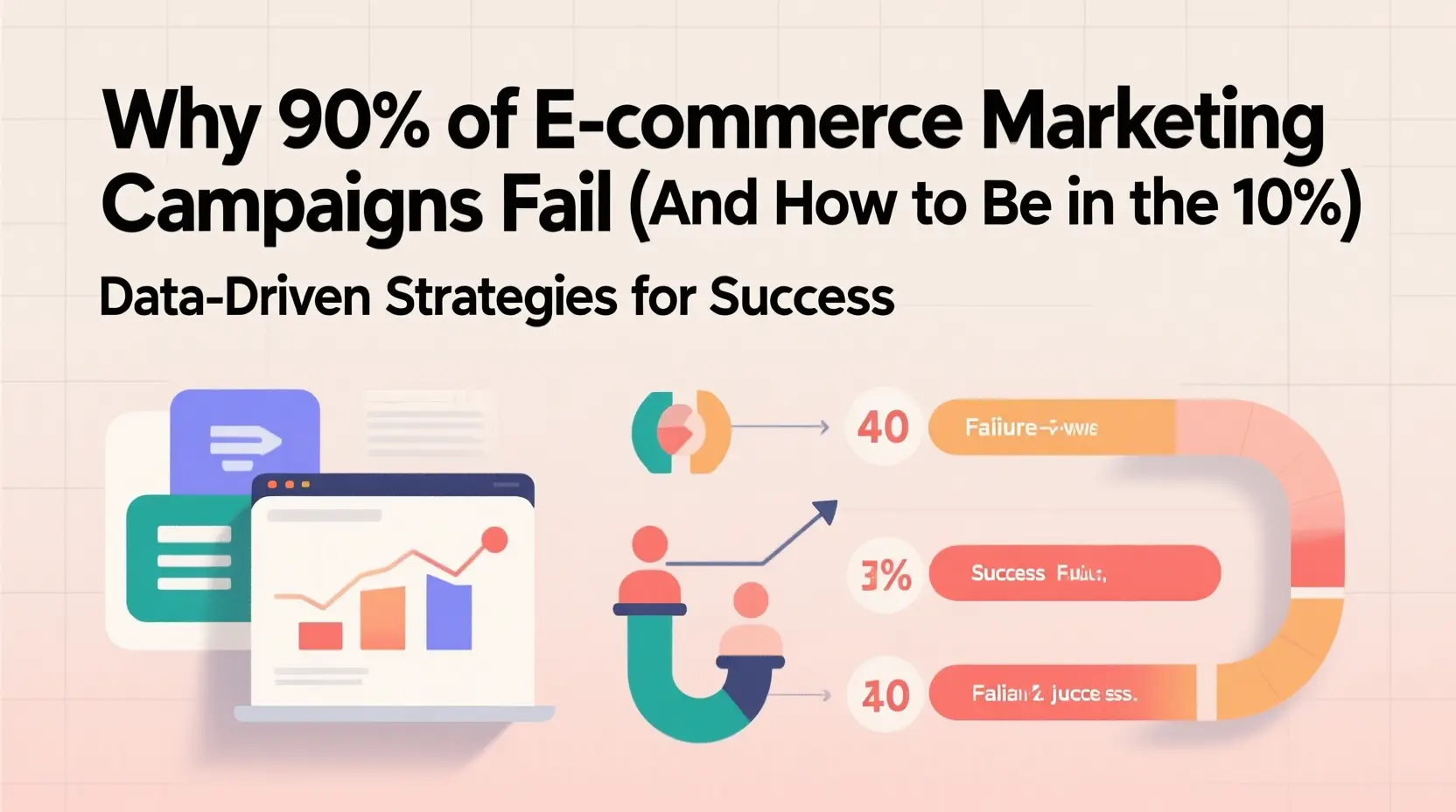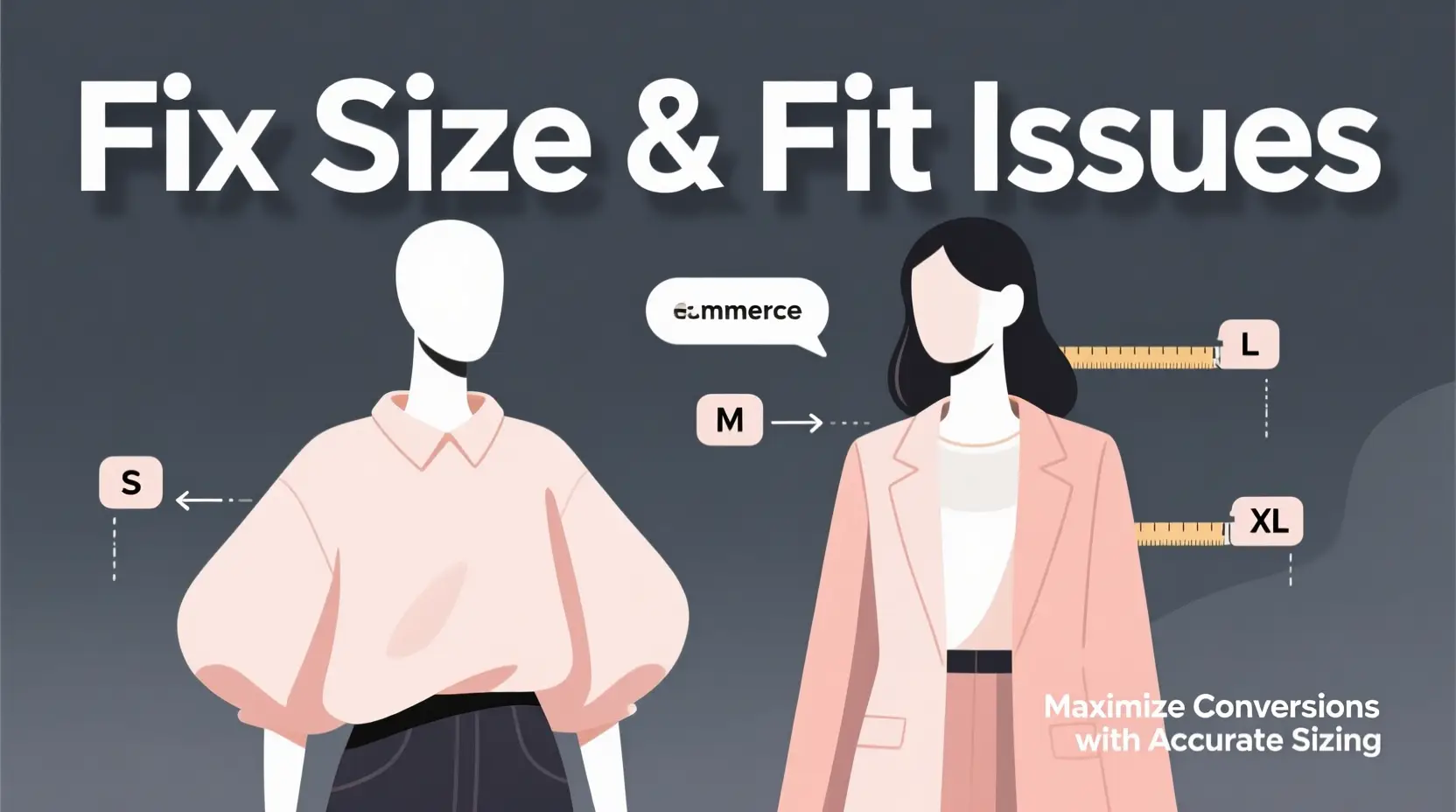The Pipeline Rollercoaster: Why Your Conversions Swing Wildly Every Quarter
Quarterly revenue reports shouldn’t feel like gambling, yet many e-commerce businesses experience dramatic swings in pipeline performance that make forecasting impossible. One quarter delivers exceptional results, the next falls flat despite similar marketing spend and effort.
A marketing manager recently shared their transformation story on r/marketing, describing how they eliminated the “yo-yo quarters” that plagued their B2B operation. Their campaigns would “hit hard for a week then quality slid and nobody could explain why.” Sound familiar?
The core insight applies directly to e-commerce: inconsistent pipeline performance stems from disconnected systems, misaligned teams, and reactive rather than systematic approaches to customer acquisition and conversion. This tutorial provides a step-by-step framework to build the steady, predictable conversion pipeline that sustainable e-commerce growth requires.
Whether you’re managing paid advertising, SEO, email marketing, or customer lifecycle campaigns, the principles of pipeline consistency remain the same: systematic tracking, aligned messaging, and data-driven optimization create sustainable results that compound over time rather than fluctuating wildly based on external factors.
Understanding Pipeline Consistency Fundamentals
The Anatomy of Pipeline Volatility
Pipeline inconsistency in e-commerce typically manifests through several interconnected problems:
Campaign Performance Swings: Advertising campaigns that perform well initially but degrade over time without clear explanation, leading to unpredictable customer acquisition costs and conversion rates.
Channel Conflict: Different marketing channels operating in isolation, creating mixed messages and fragmented customer experiences that reduce overall effectiveness.
Attribution Confusion: Unclear understanding of which touchpoints drive conversions, leading to misallocated budgets and strategic decisions based on incomplete data.
Seasonal Overreaction: Dramatic strategy changes in response to short-term performance variations, preventing the consistent execution necessary for long-term optimization.
Quality vs. Quantity Disconnects: Focus on traffic volume or lead generation without corresponding attention to conversion quality, resulting in pipelines full of unqualified prospects.
The True Cost of Pipeline Inconsistency
Revenue Unpredictability: Businesses cannot accurately forecast income, making it difficult to plan inventory, staffing, and growth investments effectively.
Resource Waste: Marketing budgets get allocated to short-term tactics rather than systematic improvements, reducing long-term return on investment.
Team Dysfunction: Sales and marketing teams blame each other for poor results, creating organizational friction that further degrades performance.
Customer Experience Degradation: Inconsistent messaging and disjointed customer journeys reduce trust and conversion rates across all channels.
Competitive Disadvantage: Companies with stable, optimized pipelines compound their advantages while inconsistent competitors struggle with constant strategy changes.
Step-by-Step Implementation Guide
Phase 1: Data Foundation and Tracking Integration (Week 1-2)
Step 1: Implement Unified Customer Journey Tracking
The foundation of pipeline consistency lies in comprehensive data collection that follows customers from initial awareness through purchase and beyond.
Technical Implementation:
- Connect all customer touchpoints to your analytics system: website visits, email opens, social media interactions, chat conversations, and phone calls
- Implement cross-device tracking to understand complete customer journeys rather than fragmented sessions
- Set up conversion goals that align with business objectives, not just immediate purchases
- Create custom audiences based on engagement levels and purchase intent signals
E-commerce Specific Considerations:
- Track micro-conversions: email signups, product page views, cart additions, wishlist saves, and review reads
- Monitor customer service interactions as pipeline indicators: live chat sessions, return requests, and support ticket topics
- Integrate inventory data with demand signals to identify supply-demand mismatches affecting conversion rates
- Connect offline events like phone orders or in-store pickups to online customer profiles
Step 2: Create Consistent Data Standards
Naming Conventions: Establish consistent UTM parameters, campaign naming, and audience definitions across all channels to enable accurate cross-channel analysis.
Attribution Models: Implement attribution models that accurately reflect your customer’s buying journey, whether that’s first-touch, last-touch, or multi-touch attribution.
Data Quality Protocols: Create processes to identify and correct data inconsistencies, duplicate entries, and tracking gaps that distort performance analysis.
Reporting Standardization: Develop standardized reporting formats that present the same metrics consistently across different channels and time periods.
Phase 2: Content and Campaign Alignment (Week 3-4)
Step 3: Synchronize Content with Paid Campaigns
One of the most common causes of pipeline inconsistency is the disconnect between advertising messages and landing page experiences.
Message-Match Framework:
- Ensure every paid advertisement has a corresponding landing page that continues the conversation started in the ad
- Align visual elements, headlines, value propositions, and calls-to-action between ads and landing pages
- Create campaign-specific landing pages rather than directing all traffic to generic product pages
- Test and optimize the handoff experience between different marketing channels
Content Staging Strategy:
- Develop content that supports different stages of the customer journey: awareness, consideration, and decision
- Create retargeting campaigns that progress customers through the funnel with increasingly specific messaging
- Align email marketing, social media, and content marketing with current paid campaign themes
- Establish content calendars that coordinate messaging across all customer touchpoints
Step 4: Implement Cross-Channel Messaging Consistency
Brand Voice Standardization: Ensure consistent brand personality and messaging tone across all customer interactions, from advertising copy to customer service responses.
Value Proposition Clarity: Develop clear, consistent value propositions that appear across all marketing channels and customer touchpoints.
Visual Identity Consistency: Maintain consistent visual branding, color schemes, and design elements across all customer-facing materials.
Offer Coordination: Avoid conflicting promotions or pricing across different channels that can confuse customers and reduce trust.
Phase 3: Performance Monitoring and Optimization Systems (Week 5-6)
Step 5: Establish Weekly Performance Scorecard
Create a simple, consistent reporting system that tracks the metrics most directly connected to business outcomes.
Core Metrics Framework:
- Traffic Quality Indicators: Bounce rate, time on site, pages per session by traffic source
- Engagement Metrics: Email open rates, click-through rates, social media engagement by campaign
- Conversion Funnel Performance: Landing page conversion rates, cart abandonment rates, checkout completion rates
- Revenue Attribution: Revenue by channel, customer lifetime value trends, return on ad spend
Scorecard Design Principles:
- Limit to 5-7 key metrics that directly impact business results
- Use consistent time periods and comparison benchmarks
- Include both leading indicators (traffic, engagement) and lagging indicators (revenue, LTV)
- Create visual dashboards that make trends immediately apparent
Step 6: Create Systematic Testing Framework
Testing Hierarchy: Establish priority systems for testing based on potential impact and resource requirements.
Control Group Maintenance: Maintain consistent control groups that allow for accurate measurement of test results over time.
Testing Calendar: Schedule tests systematically rather than running random experiments that make it difficult to isolate variables.
Result Documentation: Create standardized processes for documenting test results, learnings, and implementation decisions.
Phase 4: Advanced Pipeline Optimization (Week 7-8)
Step 7: Implement Predictive Customer Engagement
Modern e-commerce businesses increasingly use AI-powered systems to engage customers proactively rather than waiting for them to convert through traditional funnel progression.
Behavioral Trigger Systems:
- Set up automated responses to specific customer behaviors: extended product page viewing, cart abandonment, repeat visits without purchase
- Create dynamic email campaigns that adjust content based on individual customer preferences and browsing history
- Implement real-time chat triggers that offer assistance when customers show signs of purchase hesitation
- Develop retargeting campaigns that adapt creative content based on specific products viewed and customer characteristics
Conversational Commerce Integration: Platforms like Immerss demonstrate how AI-powered conversational commerce can eliminate many traditional pipeline inconsistencies by providing personalized assistance throughout the customer journey. Instead of hoping customers navigate your funnel successfully, conversational commerce proactively addresses questions, concerns, and hesitation points in real-time.
Step 8: Optimize Customer Lifecycle Value
Post-Purchase Engagement: Develop systematic approaches to customer retention, upselling, and referral generation that extend pipeline value beyond initial transactions.
Customer Segmentation: Create detailed customer segments based on purchase behavior, lifetime value potential, and engagement preferences to optimize resource allocation.
Loyalty Program Integration: Implement loyalty programs that encourage repeat purchases and increase customer lifetime value predictably.
Referral System Development: Create systematic referral programs that turn satisfied customers into pipeline contributors through word-of-mouth marketing.
Best Practices and Pro Tips
Pro Tips for E-commerce Pipeline Consistency
Start with Your Highest-Value Customer Segments: Focus initial optimization efforts on customer segments with the highest lifetime value rather than trying to optimize for all traffic simultaneously.
Prioritize Mobile Experience: With over 50% of e-commerce traffic coming from mobile devices, ensure your pipeline optimization efforts prioritize mobile user experience and conversion paths.
Leverage Seasonal Patterns: Instead of fighting seasonal trends, build them into your pipeline planning by adjusting campaigns, inventory, and resource allocation based on predictable seasonal patterns.
Integrate Customer Service Data: Customer service interactions provide valuable insights into pipeline friction points. Regular analysis of support tickets, live chat transcripts, and return reasons can identify optimization opportunities.
Advanced Optimization Strategies
Dynamic Pricing Integration: Implement dynamic pricing strategies that adjust based on demand signals, inventory levels, and customer segments to optimize both conversion rates and profit margins.
Personalization at Scale: Use customer data to create personalized shopping experiences that improve conversion rates while maintaining operational efficiency.
Cross-Sell and Upsell Systematization: Develop systematic approaches to cross-selling and upselling that increase average order value without appearing pushy or reducing customer satisfaction.
Inventory-Demand Alignment: Align marketing campaigns with inventory levels to avoid promoting products that are out of stock or overstocked, which can distort pipeline performance.
Common Mistakes to Avoid
Data and Analytics Mistakes
Over-Attribution to Last-Click: Focusing exclusively on last-click attribution undervalues awareness and consideration-stage marketing efforts, leading to underinvestment in top-of-funnel activities.
Short-Term Optimization: Making strategy changes based on short-term performance fluctuations prevents the consistent execution necessary for long-term optimization.
Vanity Metrics Focus: Prioritizing metrics like page views or social media followers over business outcomes like conversion rates and customer lifetime value.
Data Silos: Keeping customer data isolated in different systems prevents comprehensive customer journey analysis and optimization.
Campaign and Content Mistakes
Message-Mismatch: Creating advertising campaigns that don’t align with landing page content, causing confusion and reducing conversion rates.
Channel Cannibalization: Running competing campaigns across different channels that bid against each other or confuse customers with conflicting messages.
Generic Landing Pages: Directing paid traffic to generic product pages rather than campaign-specific landing pages that continue the advertising conversation.
Inconsistent Brand Voice: Using different messaging tones and value propositions across different marketing channels, reducing brand coherence and trust.
Organizational Mistakes
Sales-Marketing Misalignment: Failing to coordinate sales and marketing efforts, leading to conflicting customer experiences and inefficient resource allocation.
Reactive Strategy Changes: Constantly changing marketing strategies in response to short-term performance fluctuations rather than maintaining consistent optimization approaches.
Insufficient Testing Discipline: Running too many simultaneous tests or making changes without proper control groups, making it impossible to identify effective optimizations.
Technology Overcomplication: Implementing complex marketing technology stacks without proper training or processes, leading to data fragmentation and operational inefficiency.
Measuring Success and ROI
Key Performance Indicators for Pipeline Consistency
Primary Consistency Metrics:
Conversion Rate Stability: Measure the coefficient of variation in conversion rates over time. Lower variation indicates more stable pipeline performance.
Customer Acquisition Cost Predictability: Track the consistency of customer acquisition costs across different time periods and channels.
Revenue Forecasting Accuracy: Compare actual revenue to forecasted revenue to measure pipeline predictability improvements.
Attribution Model Validation: Regularly test and validate attribution models to ensure accurate measurement of channel effectiveness.
Secondary Performance Indicators:
Customer Lifetime Value Trends: Monitor changes in customer lifetime value to ensure pipeline optimization doesn’t sacrifice long-term value for short-term conversions.
Customer Satisfaction Scores: Track customer satisfaction metrics to ensure efficiency improvements don’t degrade customer experience.
Team Productivity Metrics: Measure marketing and sales team productivity improvements resulting from better pipeline consistency.
Competitive Performance: Monitor competitive position and market share to ensure pipeline optimization translates to business growth.
ROI Measurement Framework
Direct Revenue Impact: Calculate the revenue increase attributable to improved pipeline consistency and conversion rate optimization.
Cost Efficiency Improvements: Measure reductions in customer acquisition costs and marketing waste resulting from better alignment and tracking.
Resource Optimization: Quantify time savings and productivity improvements from streamlined processes and better data availability.
Risk Reduction Value: Estimate the value of reduced revenue volatility and improved business predictability for planning and investment purposes.
Advanced Analytics and Attribution
Multi-Touch Attribution Models: Implement sophisticated attribution models that accurately credit different touchpoints in the customer journey.
Customer Journey Analysis: Use analytics tools to identify the most common paths customers take from awareness to purchase and optimize based on these patterns.
Predictive Analytics: Develop predictive models that identify high-value prospects and optimize marketing resource allocation accordingly.
Cohort Analysis: Track customer behavior and value over time to identify trends and optimize long-term pipeline performance.
Technology Stack for Pipeline Consistency
Essential Tools and Platforms
Analytics and Tracking:
- Google Analytics 4 with enhanced e-commerce tracking
- Customer data platforms (CDP) for unified customer profiles
- Attribution modeling software for multi-touch attribution analysis
- Heat mapping and user session recording tools
Campaign Management:
- Marketing automation platforms for cross-channel campaign coordination
- A/B testing tools for systematic optimization
- Social media management platforms for consistent messaging
- Email marketing platforms with advanced segmentation capabilities
Customer Engagement:
- Live chat and conversational commerce platforms for real-time customer assistance
- Personalization engines for dynamic content optimization
- Customer relationship management (CRM) systems for sales-marketing alignment
- Customer feedback and survey tools for continuous improvement insights
Integration Considerations
Data Flow Architecture: Design data flows that ensure customer information moves seamlessly between different systems without creating silos or inconsistencies.
API Management: Implement robust API connections between different tools to enable real-time data synchronization and automated workflows.
Privacy Compliance: Ensure all technology implementations comply with data privacy regulations while maintaining comprehensive customer tracking capabilities.
Scalability Planning: Choose technology solutions that can scale with business growth without requiring complete system replacements.
Future-Proofing Your Pipeline Strategy
Emerging Trends and Technologies
Artificial Intelligence Integration: AI-powered optimization tools that automatically adjust campaigns, content, and customer experiences based on real-time performance data.
Voice Commerce Optimization: Preparing for voice-activated shopping experiences that require different optimization strategies and customer journey considerations.
Augmented Reality Shopping: Integrating AR technologies that allow customers to virtually try products before purchasing, reducing return rates and increasing conversion confidence.
Blockchain and Decentralized Commerce: Understanding how blockchain technologies might affect customer tracking, attribution, and commerce infrastructure.
Adaptability Frameworks
Flexible Testing Infrastructure: Build testing and optimization frameworks that can quickly adapt to new channels, technologies, and customer behaviors.
Modular Technology Stack: Design technology architectures that allow for easy integration of new tools and platforms without disrupting existing systems.
Continuous Learning Culture: Establish organizational cultures that prioritize continuous learning, experimentation, and adaptation to changing market conditions.
Customer-Centric Evolution: Maintain focus on customer needs and preferences as the primary driver of pipeline strategy evolution, rather than chasing technology trends.
Conclusion: From Chaos to Consistent Growth
The marketing manager’s Reddit story demonstrates that pipeline consistency isn’t about finding the perfect campaign or channel—it’s about building systematic approaches that eliminate variables and create predictable customer journeys. The transformation from “yo-yo quarters” to steady growth requires discipline, data-driven decision making, and alignment across all customer-facing activities.
The framework presented in this tutorial addresses the core challenges that create pipeline volatility: disconnected data systems, misaligned messaging, reactive optimization approaches, and insufficient focus on customer journey continuity. By implementing these systematic approaches, e-commerce businesses can create the steady, scalable growth that sustainable success requires.
The key insight is that consistency beats optimization in the short term, but systematic consistency enables optimization in the long term. Companies that build stable, predictable pipelines create the foundation for sophisticated optimization strategies that compound over time rather than conflicting with each other.
Modern conversational commerce platforms like Immerss represent the evolution of this thinking, providing AI-powered systems that maintain consistency while delivering personalized experiences at scale. The future belongs to businesses that combine systematic pipeline management with intelligent customer engagement technologies.
Book Your Live Demo to discover how Immerss can help you build the consistent, high-converting customer engagement pipeline that transforms pipeline volatility into predictable growth.



